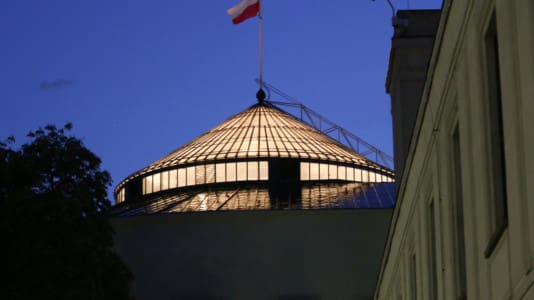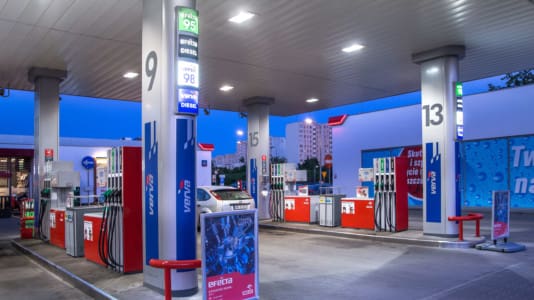The migrants who land on the beaches of the Italian island of Lampedusa in unprecedented numbers do not spend thousands of euros and risk their lives on small boats without good reason. They are convinced that once they make it to mainland Europe — and the Italian government takes care of their transport from an island too tiny for so many people — they are then sure they can stay forever, especially if they can reach France.
The EU-27 have a very bad record of executing their own deportation orders and, despite all the talk in Brussels about the need to coordinate efforts for more effective returns of migrants who have come illegally to Europe and are not entitled to asylum, things have been getting worse. In fact, only 21 percent of migrants slated for deportation were actually sent back to their country of origin in 2022.
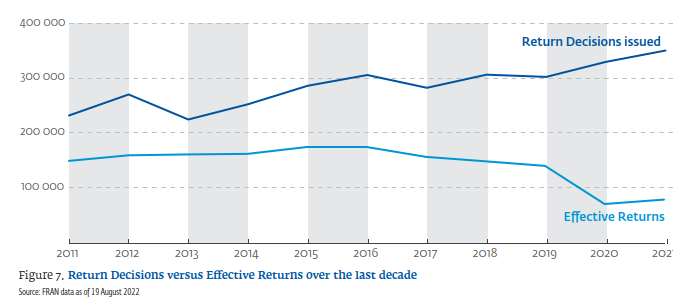
It is also worth noting that the most effective returns are to European countries like Ukraine and Albania, not to Middle Eastern and African countries, which usually refuse to take back their nationals.
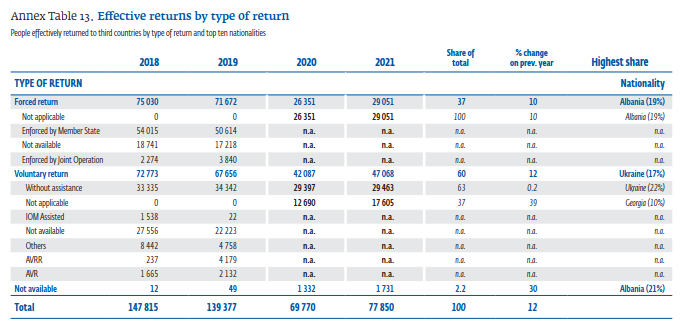
Many of the illegal immigrants landing in Lampedusa are not heading for Italy but for France, as France has one of the worst ratios of effective returns in the whole European Union. This ratio has fallen sharply under President Emmanuel Macron, who, since his first election in 2017, has presided over an unprecedented rise in both legal and illegal immigration.
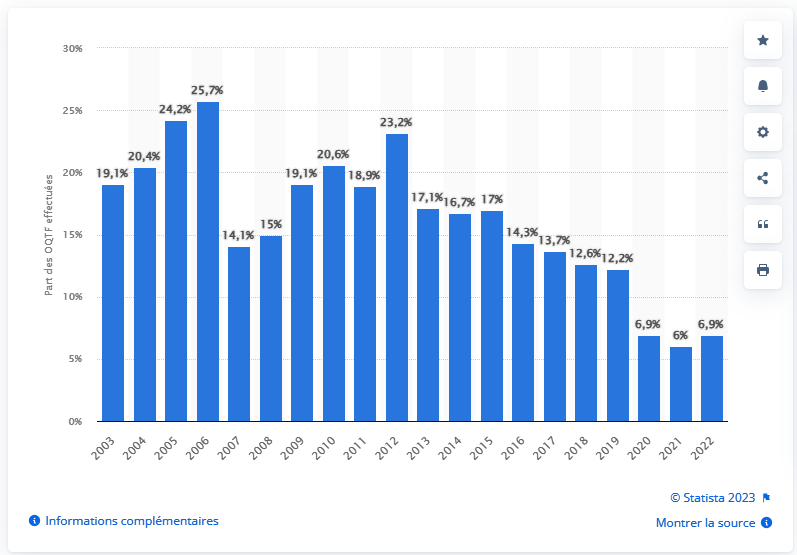
On average, 96 percent of illegal immigrants who are issued a deportation order end up staying in France, according to a report by the French Court of Auditors, the Cour des Comptes. In 2022, 15,396 left France, but on average 30,000 have their stay legalized every year, so on a regular basis, a migrant that makes it through Italy to France stands a much better chance to have his or her stay legalized than to be deported back to his country.
For years, Frontex, the EU border agency, has openly admitted in its reports that the return/readmission risk for migrants is a major factor in their choice of migration route and destination.
Italy does not have a good record either, but it is still a better one than France’s. Between 2018 and 2021, of 107,368 deportation orders 21,366 were effectively executed, which is just under 20% of the total.
In the face of the events in Lampedusa, Giorgia Meloni has now said her government will step up deportations. To that end, her government has announced new detention centers for migrants are going to be built and the period of time during which they can be legally kept there waiting for their deportation is going to be extended to 18 months.
[pp id=92362]
However, the dangerous policy of social engineering through mass immigration conducted by Emmanuel Macron and his government in France is going to ensure things stay difficult for Italy.
Indeed, adding to an already worsening record of illegal immigration, the French have been talking for almost a year now, since November 2022, about legalizing the stay of hundreds of thousands of illegal immigrants. At the same time, in an effort to mislead a French electorate overwhelmingly opposed to further immigration from outside Europe into believing the government is interested in resisting illegal immigration, the French authorities have sent reinforcements to the border with Italy. This will allow France to continue to lure more people to Europe with the hope that countries like France will legalize their stay, while at the same time, many of these same migrants may find it increasingly difficult to leave Meloni’s Italy.
France’s actions could all serve a clear purpose. Last May, France’s interior minister was explaining to French voters that people like Marine Le Pen in France and Giorgia Meloni in Italy have only words but no real solutions. He then said about Meloni, sparking a diplomatic crisis with Italy, that “she is incapable of solving the migratory problems for which she was elected,” adding: “Meloni is like Le Pen, she gets elected on “you’re going to see what you’re going to see” and then what we see is that it doesn’t stop, and it amplifies.”
Presently, the total number of illegal immigrants in France is estimated at somewhere between 800,000 and 1 million people. This rough estimation is based on the number of migrants who benefit from state medical aid for illegal immigrants, which stands roughly at 400,000, and on the assumption that many illegals have never used this aid and are thus unregistered.
In a book published in 2020 under the title “Immigration. Ces réalités qu’on nous cache” (“Immigration. The Realities That Are Hidden From Us”), Patrick Stefanini, a former secretary general in the French Ministry of Immigration, estimated the number of illegals in France at around 900,000, for a total official population of 68 million people (including over 19 million first, second, and third-generation immigrants).
It should also be noted in passing the medical scheme for illegal immigrants, the AME (or Aide Médicale d’État in French), cost the French taxpayer €1.2 billion in 2022. Its cost has been steadily rising for years (+128 percent between 2001 and 2018) alongside the rise in the number of illegal immigrants who are present on French soil.
[pp id=32844]
It is one of the things Marine Le Pen’s National Rally has promised to get rid of if it is elected to government, not only to seek savings but also to eliminate the additional pull factor it represents.
In the meantime, the incumbent government’s planned bill will very much improve the odds for illegal immigrants, even if the French government tries to minimize the measure’s importance by saying that it will only lead to “a few thousand” additional legalizations each year. Whether it will be only “a few thousand” — or, more likely, a few hundred thousand — the legalization efforts have been in discussion since November last year. The planned amnesty has sent a clear signal to would-be immigrants that now is the time to reach France.
“Italy has been abandoned by the EU and the French government, but the immigrants we see here in #Lampedusa today, we will see them in France in a week’s time,” said Marion Maréchal, vice-chair of Éric Zemmour’s Reconquest party, who will lead its list in the European elections next year, while talking to Italian television during a visit on the island of Lampedusa.
Already in 2022, in France, the number of asylum applications had returned to its 2019 level, before the Covid-19 pandemic, with 137,046 first-time applications compared with 138,420 three years ago. This was 31.3 percent more than in 2021. In total, 156,103 applications were made, more than in 2019 (151,283). As in 2021, Afghanistan was the main country of origin for asylum seekers, with 22,570 applications in 2022. Bangladesh, Turkey, Georgia, and the Democratic Republic of Congo followed with a total of 56,179 people being granted asylum in 2022 — slightly more than in 2021 (54,379).
In comparison, in 2022, there were 77,195 first-time applications for asylum in Italy, half the number in France (and one-third of the number in Germany, which had 217,735 first-time applications last year).
The French government’s draft law on immigration is presented to the French as a law that will make it easier to deport illegal immigrants. In reality, however, it will only make their deportation easier if they are convicted by a court for crimes punishable with 10 or more years in jail, or five years in cases of repeated offenses (e.g., for murder or rape).
[pp id=57729]
On the other hand, in response to labor shortages in certain sectors of the French economy (catering, construction, etc.), the bill introduces a one-year residence permit for “work in jobs in short supply.” Illegal workers will be able to apply for regularization under this new card, which will be issued automatically, subject to certain conditions (at least three years’ residence in France, eight months’ experience during the last 24 months in a trade or geographical area experiencing a labor shortage).
Since Macron does not have an absolute majority in parliament and in order to get the support of the center-right Les Républicains party for its draft immigration law, in the spring, the French government suggested it could retreat from this planned permanent regularization path for illegal immigrants. However, it is now facing a rebellion in its own ranks, with part of Macron’s MPs siding with the left to demand that the scheme be part of the law and threatening to vote against it if it is not.
In an open letter published in the very left-wing and radically pro-immigration French daily Libération on Sept. 11, 35 MPs, including a group of MPs from Macron’s Renaissance party, have demanded that the legalization of illegals be part of the law that is now set to be submitted to the French Senate in November, according to the plan presented by Interior Minister Gérald Darmanin.
This ongoing debate about the legalization of illegal immigrants is certainly followed very closely in Africa and the Middle East.
Similar moves in Italy in 2020 and in Spain in 2006 caused a massive and lasting surge in illegal immigration, and there is no reason why things should be different this time. The French authorities must be all too aware of this, and this can only confirm that the records being set in immigration numbers under President Macron and the acceleration of the Great Replacement in France are by design.



